My Rookie Swiftsure Experience
Published on May 30th, 2018
The Swiftsure International Yacht Race is the premier long distance sailing race in the Pacific Northwest and British Columbia area. Starting and ending in Victoria, BC, Canada, the 75th edition on May 26 attracted one design expert but distance racing rookie Ron Rosenberg.
Here Ron tells the story of how this unlikely team succeeded on the race course, but more so, gained an appreciation of what has even greater importance:
I knew my teammates onboard Mike Breivik’s Beneteau Oceanis 45, Le Reve, felt my nap time was over when they tacked without telling me and I reverse somersaulted across my plush mattress to the new low side and crashed into the far leeward side of the hull, face pressed against the hull window, looking down into the deep blue 400’ water outside… kind of a fish-finder meets Finding Nemo aquarium feeling.
Nap over, time to get back on deck. Which is also pretty comfy as we opted to keep the enclosed hard top dodger up and in place for the race once we saw that more than 25 knots were forecast. That turned out to be a smart move on three key fronts:
1. We never got wet, not even sprayed. It felt more like you were in an iMAX theatre watching the race as if you were really there, but never actually feeling a drop of water as the huge dodger windshield provides a wonderful, unobstructed view of the race. We pretty much dressed up in our foul weather gear just to play the part of a racing team. Fake it until you make it.
2. I think our nice big dodger had a bit of a staysail effect under the boom any time we were sailing off the wind. At times we were going so fast downwind I think the bow thruster even came out of the water… I figured this was the case because that barely detectable low gurgling noise in the bow would sometimes go silent when we were surfing down a wave at more than 10 knots.
Everyone who docks a boat this size should definitely have a bow thruster. You dock like a Rock Star. Too bad we’re not able to use it during racing as it could have come in handy as we were trying to lay the pin end and would definitely have helped our pointing upwind if you could just tap that leeward bow button now and again.
3. None of our 60 in-class competitors seemed to take us even remotely seriously when we went to take the pin at the start. One competitor even waved us right on by with about a minute to go as if we were mistakenly in his racing area and the parking area for RVs was the next lot over.
Prior to the start our hard top dodger seemed to attract a lot of attention at the dock and as folks on the docks would ask if it was going to be removed prior to racing, other nearby sailors would say, “Of course they’ll take that down-those aren’t for racing…” Newsflash: these hard top dodgers are awesome for racing!
————–
Our stock Beneteau Oceanis 45 must have been a true design challenge. Imagine the design brief: 3 luxurious staterooms, 2 with private bathrooms and showers, a well-appointed kitchen with all the appliances, spacious salon, all to be driven upwind (well, almost close-hauled) at more than 7 knots by a roller furling mainsail (maybe 20% smaller with no roach?) and roller furling jib.
The designers of this new breed of performance cruisers deserve big credit; they knocked it out of the park. This boat had me the moment I laid eyes on the Harken electric powered self-tailing winches. No kidding, you tack, push a button and off you go! Now, THAT is some phenomenal engineering right there. Add that to the same wish list as bow thrusters. We really need to change these sailing rules to make it easier for more people to try racing… Man, our tacks were SO MUCH BETTER in practice than in the actual race.
Like many of you, I’m a day racer. I prefer one design racing and I enjoy being on the water competing and improving, with and against friends during the day, then returning ashore for a hot shower, sharing a few laughs, have a nice meal, and then sleeping in a warm, dry bed.
If I can occasionally have a day or two like that, I’m energized for weeks. Surprisingly, my first experience in the Swiftsure International Yacht Race was really not so different than some of my very best one design racing days. In some ways, it was even better!
Imagine getting to go racing with about 150 other boats sailed by people who are similarly passionate about the sport you love, and it all takes place in this beautiful natural setting with magnificent, untouched rocky coastline and evergreen trees surrounded by breathtaking mountain ranges completely covered in snow. Throw in clear blue skies, lots of sun, and a nice 10-25 knot fresh breeze and that’s what we enjoyed for nearly our entire 17 hour race.
There was also a pretty nice sunset around 9 pm and by that time we were surfing downwind at more than 10 knots of boat speed enjoying a hot meal of cannelloni, garlic bread, and salad too. I found nothing to complain about with my entire rookie Swiftsure experience. Part of me is left asking, “Is it possible all 74 previous Swiftsure Races have been like this?” I’ve only done this one so far, so I don’t know for sure if the veterans are pulling my leg or not.
Our Overall Approach To Swiftsure
We approached the 75th Swiftsure just as we would a one design world championship: we prepared ourselves the best we possibly could given our respective constraints, we learned and improved significantly at every opportunity, we asked literally hundreds of questions to our more experienced friends in the local Seattle sailing community, then we listened and learned and we kept things as simple and as enjoyable as possible.
There were some surprises along the way, but the biggest surprises for us were how much non-stop fun and laughter we had together on this extraordinary adventure race. Later, after we finished in the middle of the night, we awoke dockside to the morning sun to learn that we had won our division and we won overall also. Yes, I know… surprise! 😉
This is the story of our rookie Swiftsure experience onboard Le Reve, sharing what we learned along the way and how we managed to pull this off, and have so much fun together every step of the way.
Our story began just about four months ago in January at the Seattle Boat Show when a friend of mine asked me to meet with a friend of his who had recently purchased a beautiful new Beneteau Oceanis 45 cruising boat… ahem… sorry, I mean Performance Cruising boat.
In the Pacific Northwest Mike Breivik, is well known as a smart, successful, goal oriented Seattle businessman. We met for breakfast and he told me about how he enjoys cruising with his family and friends. He told me he was interested in learning to race and that he had a rather near term goal in mind.
So far so good, I liked the way this all sounded and we all know that we always need more new, fresh sailors to enjoy our racing scene. I was pretty sure he was about to tell me that he wanted to experience the vibrant evening/after work casual racing scene we have here in Seattle. Well, I was wrong.
Surprise
My coffee nearly shot out my nose when he looked me in the eye and said the words, “My goal is to do the Swiftsure Race this May… You know, Cape Flattery, The 101 mile course from Victoria out to Neah Bay-the mouth to the Pacific Ocean and return.”
I managed to swallow my coffee, tried to compose myself, took a slow, deep calming breath and casually looked at my watch just to check the date. As I suspected it was late January and we were already late for the start on May 26. Okay Mike, please tell me a bit more about yourself and your sailing experience, the team you have in mind, and the boat.
Turns out that while Mike is relatively new to sailing, he’s racked up far more recent ocean miles than any of the rest of us. He actually had a pretty good idea of what he was getting into all along. He was clear in his goals and together we began to chart a course to achieve that goal and discuss the initial steps toward the steep learning curve of how to best prepare ourselves for this specific adventure on this specific boat.
Early progress proved sporadic as lengthy interruptions caused by the fact that sailing comes secondary to work, family, and life for all of us and Mike’s work-related travel made finding on-the-water-practice time challenging. All in all, I think we may have sailed only about five times together prior to departing for the Swiftsure Race.
Our Strategy for Success: Work With Our Local Sailing Community
As it became clear that we weren’t going to be able to spend much time on the water practicing together and gearing up the way I had hoped, and we didn’t have time to re-invent that wheel ourselves, we agreed on a plan to work smarter, learn-it-all, and make good decisions together.
In other words, we didn’t possess all the right kinds of knowledge and experience we wanted, so we spoke with those local experts that did. That meant reaching out to those among our community with more experience that would be able to help guide us along this journey. Here is a short list of each of those key people, and what we gleaned from each of them as they generously and freely shared their wisdom and experience to help us, just for the asking.
All Mike and I did was prepare a list of questions for each of them and then listen closely to their sound advice, and try not to waste their time. It became clear that each of them are great role models and so completely willing to give back to the sport and build the sailing community, help fellow sailors improve and pay it forward… through us.
I wish to openly share the names of these high value individuals, commend them for their willingness to help us, and offer each of them a well-deserved, heartfelt thank you. We all can think of a few key individuals in our respective sailing communities, these are the ones that we came up with:
• Jonathan McKee kindly allowed me to join him for his own Swiftsure pre-race homework/strategy planning session, and patiently answered all of my questions. Jonathan is not only a great and extraordinarily accomplished sailor, but he is a truly gifted coach and communicator.
He easily provided me with the prioritized knowledge and perspective necessary to understanding each critical chapter of the Swiftsure Race, including many nuances that only a very good sailor would have picked up from years of experience on a specific race course. I love working with great coaches as they help speed up my learning curve and always seem motivated to help others enjoy the game of sailing.
• Jack Christiansen of North Sails Seattle began helping us right there at the Seattle Boat Show by talking us through his own Swiftsure experiences and through a series of follow up conversations he helped us understand early on that this is not typically a reaching race, but more of a windward-leeward race except that the beat is 51 miles long. Jack helped us come up with a great furling main design that once coated with a new McLube Water Based Sailkote PLUS slippery coating, proved remarkably versatile.
We could adjust the size of our mainsail reef by 1 foot increments along the boom without even letting the sail flap once. Jack McLube’d our furling main and jib so not only did we build heavier cloth/more durable sails with bigger battens (a McLube’d sail rolls 30% tighter than normal so it fits in the same mast tube space), but it’s now protected from mold, mildew, dirt, salt and grime.
Oh yes, Jack is wealth of information and he was more than happy to come sailing with us and help us to learn the best ways to deal with each of our onboard sail handling systems. Ultimately we determined that all we really needed were three sails for Swiftsure. Furling main, furling jib and an A2 spinnaker…and that’s all we used the entire race.
• Nigel Barron and Greg Barckert at CSR Marine were so knowledgeable across so many topics related to our boat and Swiftsure, they helped us with everything from rig tuning (how do you keep an in-mast furling mast from pumping so much in chop?), to rigging and special needs such as attaching a mast track to the front of our mast (remember there are wires, halyards, and a mainsail furled up inside there!) for our combo whisker/spinnaker pole. These guys would make the time to help us think through any questions or good ideas we could come up with, right up to the day before the race!
• Lisa Vizzini of Port Townsend Rigging is a wonderful problem solver to work with and she was the only pole supplier that could promise an on-time delivery of our whisker/spinnaker pole given our short timeframe. She even had our pole delivered directly to the start of the Swiftsure thanks to Jonathan Cruse and his Freya Team.
Knowing this would be a long windward-leeward course, this pole allowed us to bring the tack of our A2 spinnaker back to square up our spinnaker and allow us to sail deep on the 6-7 hour run toward the finish. This pole was also our back up plan whisker pole in case it got too windy for the kite we could use it to go wing and wing with the jib.
• Ken Monaghan is the local Beneteau Dealer at Signature Yachts here in Seattle. Ken not only sold the boat to Mike, but he also offered to step up and sail with us as our most experienced Swiftsure veteran. Ken is a great lifelong sailor in his own right. Ken was great about making sure the boat was always in excellent working order and he does a great job of keeping his clients all very happy.
Local Current And Our Upwind Speed Testing Program
48 hours prior to the start, Mike, Derick and I slipped Le Reve’s dock lines in Seattle at 5 am in a cold, light drizzle to make the roughly 10 hour delivery up to Victoria, BC, Canada. We dressed appropriately, with foul weather gear and lifejackets and all safety gear in place. We began motoring as we were joined by about a dozen other boats along the way in what turned out to be a virtual convoy of racing boats coming together from different parts of Puget Sound and converging toward Victoria.
As we began our delivery we talked about something we had discussed more than a month prior and that was the fact that the first chapter of our Swiftsure Race would have this same adverse current just starting to ramp up against us right at the start of the race, and we could expect to have that same strong adverse current for the first few hours of the race at least. We also knew the same applied to our delivery as we turned and headed north just as the tide began to flood and flow against us.
It was sobering to see, feel and experience the raw force of about 3 knots of water pushing against you while you’re trying to work your way against it. Trying to sail against a 3 knot treadmill of water can be daunting when there is really no good place to hide or seek relief.
Five hours later and nearly halfway there, we entered the famed Strait of Juan de Fuca, the large channel if you will that separates the Northwestern US border with that of Canada’s Vancouver Island as you head west toward the Pacific Ocean. If you live in the Pac NW and you spend any time on the water, you’ll have heard how hard and strong the wind can consistently pipe through there. It only rarely makes it as far inland as Seattle, but the Strait can be a windy, unrelenting kind of place.
As quickly as the rain stopped, and the skies cleared, the cool westerly breeze was ushered in and we unfurled both our only main and our only jib. That’s right. One in-mast furling main and one furling jib. Makes sailing fun and super easy. That’s our entire upwind sail inventory. That’s all we have to take us 51 miles upwind regardless of the wind strength. The upside is that makes proper sail selection pretty straightforward. I must say, there is something empowering in knowing you’re always using the right jib in every condition.
We Have To Be Creative In Finding Solutions
We’re underpowered in anything under 7 knots, and we’re overpowered in anything over 18 knots. Once the wind gets to a solid 18, we had better have a good depower plan. We worked on this new system on the delivery to Victoria. There is only one jib track on these boats, and no toe rail you can attach turning blocks to, so we simply lashed turning blocks to the top of our amidships dock cleats and use those as our outboard jib sheets.
We had talked about that, but over the five times we had sailed the boat together (we referred to that as practice), we had never seen more than 16 knots and had never tried it. This was our critical testing opportunity to see if they were going to work. Now, if you’re a Grand Prix sailor you’ll know that the newest TP 52s in Europe can point quite high upwind with their jib cars as far inboard as 1.9 degrees… that’s right, that translates to sheeting your jib LESS THAN 2 FEET from the leeward side of the mast!
Yet, as we became more overpowered it made sense to move our lead outboard and aft closer to the cleat on the rail of the boat in order to flatten, reduce drag and open up the slot… I was afraid to actually measure the precise distance, but my guess is that’s more than 7 feet off our centerline! This allowed us to use the same all-purpose furling jib well up into the high 20s, but of course we would have to sacrifice pointing in order to do so.
This is okay for VMG as long as we’re going faster while we’re going lower. Believe it or not, during the Swiftsure race in 20+ knots, we had Le Reve going more than 7 knots through the water at times on our upwind leg. Albeit our pointing was not very good… our entire fleet of monohulls and most of the trimarans were outpointing us, but we did have a good low and fast mode!
At the windiest part of the race we rolled up the main so the foot was about 4 feet shorter on the foot. That translates to a pretty deep reef. Then as the wind decreased, we could easily and gradually unfurl the main to the desired size… without ever slowing down. That made for surprisingly efficient gear changing as the conditions were always up and down between 12-22 knots throughout the 51 mile beat.
The Race Itself
The most fun part of all, and the part that flew by was the race itself. It was the perfect windward-leeward course with 51 mile beat and a 51 mile run with incredible scenery and natural beauty. We followed our game plan which was to start left, go left, stay on the lifted tack and sail the shifts. We just hadn’t planned on all the fun and laughs we would enjoy along the way… that seemed to really speed up the clock.
I was reminded how nice it was to just escape out on the water with a great group of people you really enjoy being around and actually relaxing and bonding. Seems like we just don’t do enough of that anymore. Funny, but for a boat full of rookies, I think all of us were a little disappointed when we arrived at the finish line and the ride is over.
Le Reve Team
Our winning team onboard Le Reve was made up of five friends, and three of us had never done anything like the Swiftsure before.
Mike Breivik is the boat owner and our primary driver-I think Mike steered for more than 10 hours of the 17 hour race and clearly loved every moment. Mike is the president of Glacier Fish Company in Seattle and possesses an extraordinary range of management skills which sure came in handy as our time on the water became limited. Mike knows how to build a great team and help everyone perform at their absolute highest potential. He has recently sailed across the Atlantic and it appears that he may have been bitten by the racing bug.
Matt Darbous sailed with his brother and father as a youth and has recently rekindled his interest in sailing through his friendship with boat owner Mike Breivik. Matt has a full time job in international trade and is currently getting his masters degree at the UW here in Seattle.
Ken Monaghan is a lifelong competitive sailor with lots of experience in both inshore one designs and offshore sailing and Ken is also the local Beneteau dealer. Ken served as our primary downwind spinnaker trimmer for the downwind half of the race in addition to historical perspective and strategic input. I think Ken knew most people on every single boat out there.
Derick Vranizan, our fearless young bowman/upwind trimmer/back up driver (I think Derick was the only one to actually venture forward of the cockpit throughout the entire 17 hour adventure!). Derick is well known for his sailing talent and a decade worth of experience with the US Sailing Team racing Lasers at the highest level internationally. He’s also a great young coach. Derick is currently in Law School and is working part time.
I’m in Marketing and I’m a fairly experienced as a sailor and a coach, primarily for Olympic classes, one design keelboats and grand prix boats. I’ve been passionate about sailing since I was about 8 years old. I’ve been lucky enough to have been on the receiving end of some great coaching and mentoring along the way, and thankfully my mentors eventually taught me to be a learn-it-all rather than a know-it-all. Now I’m thoroughly enjoying giving back and paying it forward at every opportunity.
As a kid growing up in SoCal, I had done tons of Catalina Island overnight races with my Dad and our family and friends on our family J/24 and then an Olson 30, but I think the last time I overnighted on a race had to be more than 3 decades ago. Sure, I have lots of one design and Olympic class experience too, but I couldn’t help but wonder how much of that may or may not directly apply to a Swiftsure Race.
The Best Surprise Of All
The entire Swiftsure experience from the great dockside boating scene and the warm welcome you receive from so many volunteers when you first arrive into Victoria Harbor to the hot bowl of delicious soup they hand you immediately upon finishing, the hospitality and overall vibe are remarkable. It’s a great opportunity to catch up with old friends and make some new ones too.
Sure, Mike and the entire team onboard Le Reve sailed a great race tactically and practically, and that alone sure feels good. I’ve been fortunate enough to have enjoyed my share of success in this sport, and I know enough to realize that luck and Mother Nature don’t always play your way and even the best laid plans may not come together. I just try to continue to learn all I can and help others to improve and find as much joy and rewarding satisfaction as possible within their own sailing.
I learned long ago that the real trophies come from lifelong friendships and being part of a thriving sailing community. If my experience in last weekend’s Swiftsure Race is any indication, then this kind of competitive sailing has a lot going for it. Momentum is strong and appears to be building, and I think this bodes well for the future of our sport.
Photos by Jan Anderson, Jan’s Marine Photography:


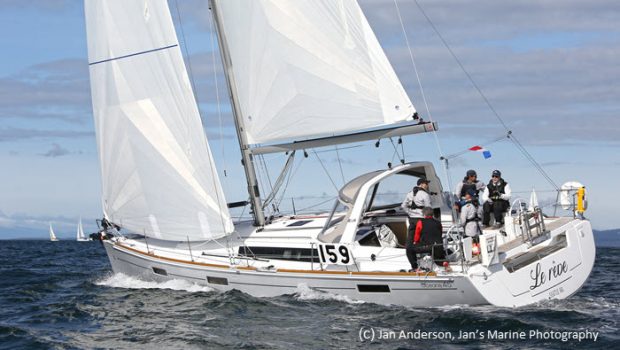

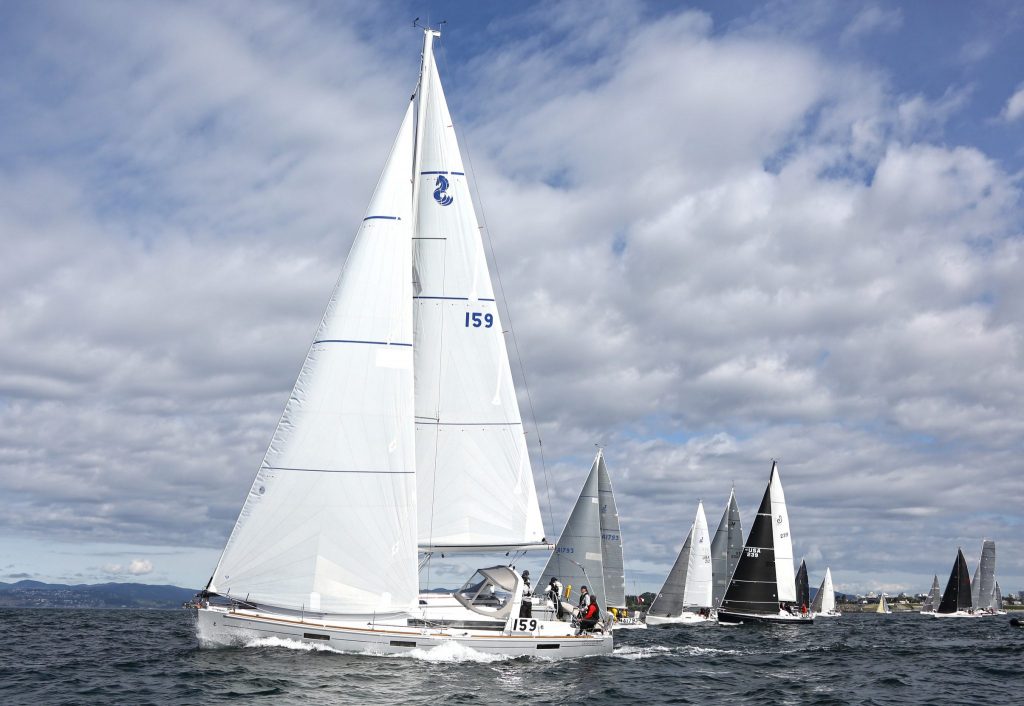
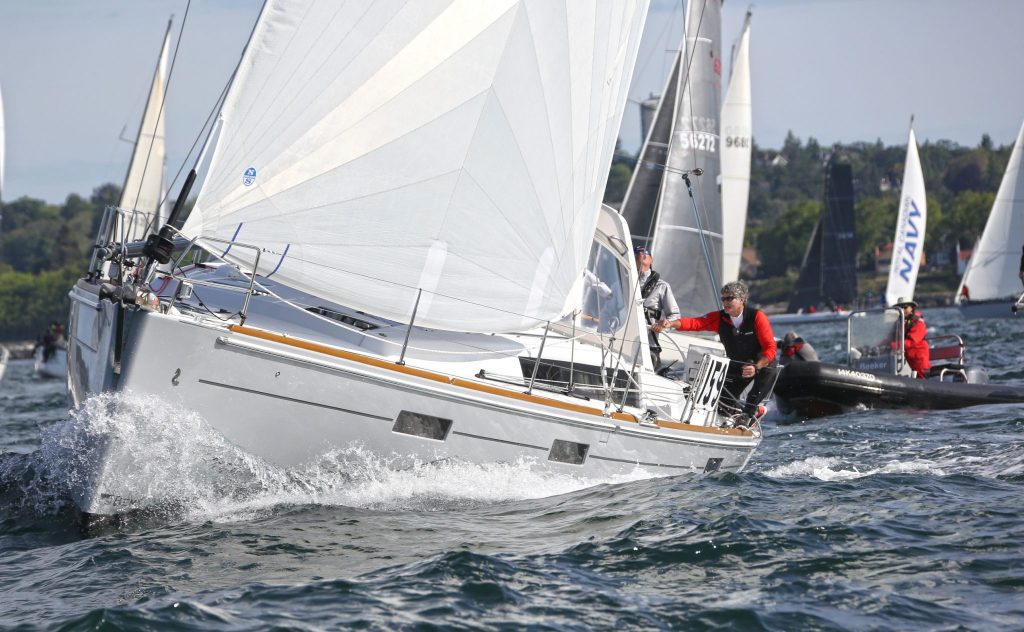


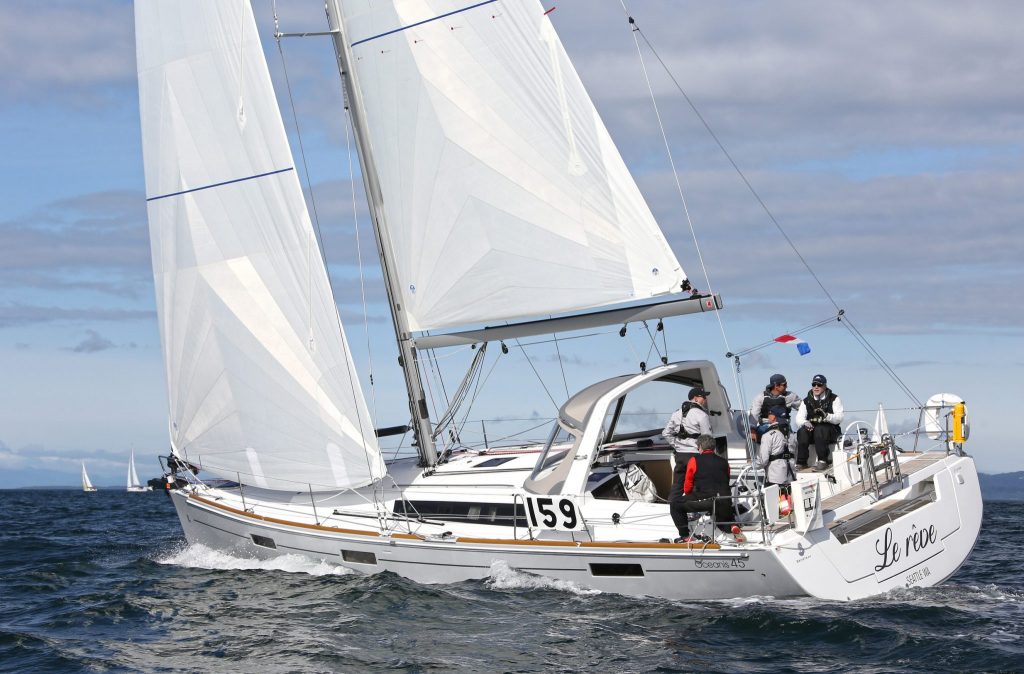

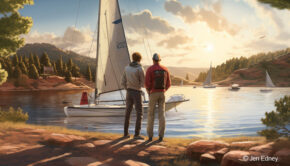

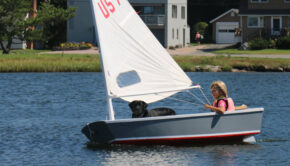

 We’ll keep your information safe.
We’ll keep your information safe.